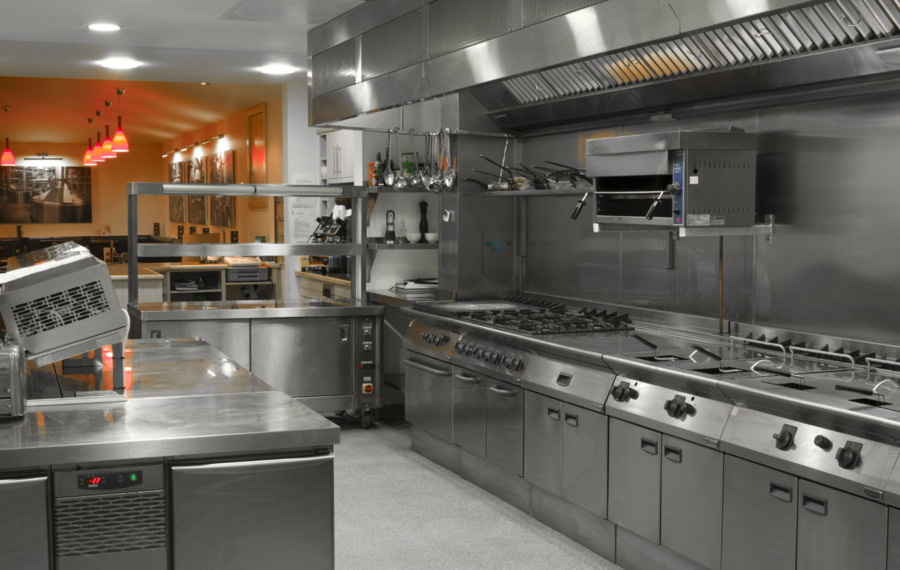Restaurants Are Using High-Tech Equipment to Create New Dining Experiences

In today’s rapidly evolving culinary world, the integration of high-tech equipment within restaurant kitchens is more than just a trend—it’s revolutionizing how chefs create and serve dishes. This shift not only enhances the functionality of kitchens but also elevates the dining experience for patrons. Exploring the impact of this technology offers fascinating insights into its role in shaping modern culinary practices and customer interactions.
Page Content
Historical Perspective
The journey from basic cooking fires to sophisticated kitchen operations reflects centuries of culinary evolution. The introduction of technologies, from simple gas ovens to advanced electrical appliances, has always influenced restaurant operations significantly. However, the pace of change has accelerated in recent decades with the digital revolution, bringing about a transformative shift in restaurant kitchen equipment.

Modern High-Tech Equipment
Contemporary kitchens are equipped with devices that sound like they belong in a science fiction novel. Tools such as sous vide machines, which allow precise temperature control, and anti-griddles that flash freeze food, are becoming standard in modern setups. These technologies not only increase efficiency but also expand the creative possibilities available to chefs.
Automation in Cooking
Automation technology is making significant inroads into culinary settings. Robotic chefs, for instance, can consistently produce complex dishes or undertake mundane tasks like chopping and stirring, thus optimizing kitchen workflows and reducing human error. This allows human staff to focus on more creative or intricate aspects of meal preparation.
Precision Cooking Tools
Precision cooking tools have catalyzed a culinary renaissance by enabling chefs to achieve exact culinary specifications. The precision afforded by devices like immersion circulators enhances flavor extraction and texture achievement, pushing the boundaries of what can be done with basic ingredients. These technologies have given rise to entirely new dishes that would not have been feasible with traditional cooking methods.
Interactive Dining Technology
At the intersection of technology and customer service, interactive dining technology reshapes how patrons engage with their food choices. Restaurants now employ interactive tables that allow diners to place orders digitally, customize dishes, and even engage with multimedia presentations about their meal’s preparation. This not only streamlines service but also enriches the dining experience, making it more engaging and personalized.
Sustainability Through Technology
High-tech equipment also plays a crucial role in advancing sustainability in the culinary world. Energy-efficient appliances and systems designed to minimize waste are increasingly common in kitchens committed to environmental stewardship. Such tools help restaurants reduce their carbon footprint while also curbing operational costs.
Enabling New Culinary Techniques
High-tech equipment has become a catalyst for culinary innovation, enabling chefs to explore new techniques such as cryo-cooking, which uses ultra-low temperatures to create textures and flavors that are impossible to produce through traditional heat-based cooking methods. Similarly, laser etching allows for precise decorations on food, combining art and technology to enhance aesthetic appeal and flavor profiles.

Influencing Menu Design
The capabilities of modern restaurant kitchen equipment directly influence menu development. Chefs can now design menus that not only cater to a broader range of dietary preferences but also include interactive elements that engage diners and offer customized experiences. The flexibility provided by high-tech tools means that menus can be adapted more swiftly to include seasonal ingredients or respond to trending dietary preferences, thereby maintaining interest and excitement among patrons.
The Role of High-Tech Equipment in Enhancing Dining Experiences
The exploration of high-tech equipment in restaurant kitchens reveals a profound impact on both the culinary arts and the dining experiences offered to patrons. As restaurants continue to embrace these advanced tools, the culinary landscape is witnessing a harmonious blend of tradition and innovation. This fusion not only preserves time-honored cooking techniques but also embraces the enhancements made possible through modern technology, providing diners with experiences that are both nostalgically familiar and excitingly futuristic.
Future Trends
Looking ahead, the integration of technology in restaurant kitchens is poised to accelerate, with advancements in AI and robotics likely playing a central role. As these technologies become more sophisticated, their adoption will become more widespread, leading to further innovations in how food is prepared and served.
Final Thoughts
For restaurateurs contemplating the integration of new technologies, the decision should consider both the immediate benefits and the long-term transformations in customer expectations. Balancing innovative technologies with authentic culinary art that patrons cherish will be key to the continued success of the culinary industry.
Restaurants aiming to stay ahead of the curve should consider not only the economic and operational advantages but also the potential to profoundly enhance the dining experience, ensuring that each meal is memorable for its quality and the unique experience it offers.